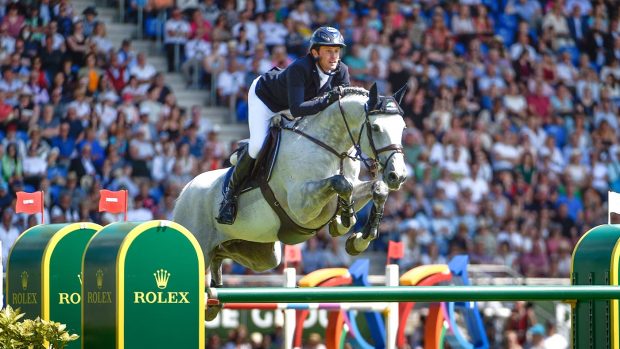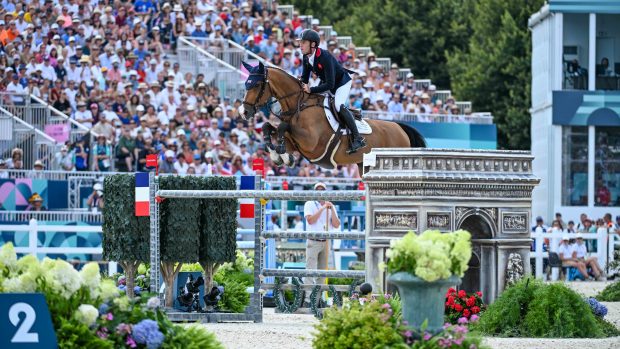Today (2 August) the world’s best event riders will do battle for team and individual medals in the Olympic eventing showjumping phase at the Tokyo Games. It will be a nail-biting competition, with Britain holding team gold after the cross-country phase, with Australia in silver and France in bronze.
The action for the final day of the eventing at the Tokyo Games starts at 5pm today local time (9am British time).
The individual riders jump first, in reverse order of merit, with the team riders following them. One rider goes from each team, in reverse order of merit. You can find out the starting order of the British riders here. The team medals will be decided after this round of showjumping. Then the top 25 riders will jump anoter round of showjumps for the individual medals.
The course designer for the Olympic eventing showjumping today is Santiago Varela from Spain, while the technical delegate is Britain’s Philip Surl.
There are 12 numbers fences in total, and the course includes one treble and one double combination. The course is a total of 490m in length and the time allowed is 79 seconds. Let’s take a virtual walk around the course…
Olympic eventing showjumping course for team medals
Fence one – The Great Wave off Kanagawa
“The Great Wave”, original title Kanagawa-oki nami ura, is the most famous piece by Japanese painter Katsushika Hokusai, who specialises in ukiyo-e. It was produced between 1830 and 1833 during the Edo period and it forms part of the collection “Thirty-six views of Mount Fuji”. The wave references the relentless force of nature, the sea, and the importance this event has in Japan’s economy and its cultural development, given the country is formed by four islands.

Fence two – Kanto Matsuri, Akita Festival
The Kanto Matsuri Akita Festival (竿燈まつり, “pole lantern festival”) is a Tanabata-related celebration in Akita City, held annually from 3-6 August. A feature of the festival is how all the participants are able to keep the kanto (long poles made out of bamboo with a paper lantern on the top) in equilibrium. These poles can reach a length of 12 metres and a weight of around 50kg. They can have up to 46 paper lamps with lit candles inside them. Once the drums, flutes and songs start to sound (“Dokkoisho”, “Dokkoisho”), each kanto is pulled up by only one person, keeping it in equilibrium. Gradually, more extensions are added until the pole reaches its maximum height. The main event of this festival are the night-time parades and there are approximately 250 kantos. This event takes place along Chuo Dori street in Akita.
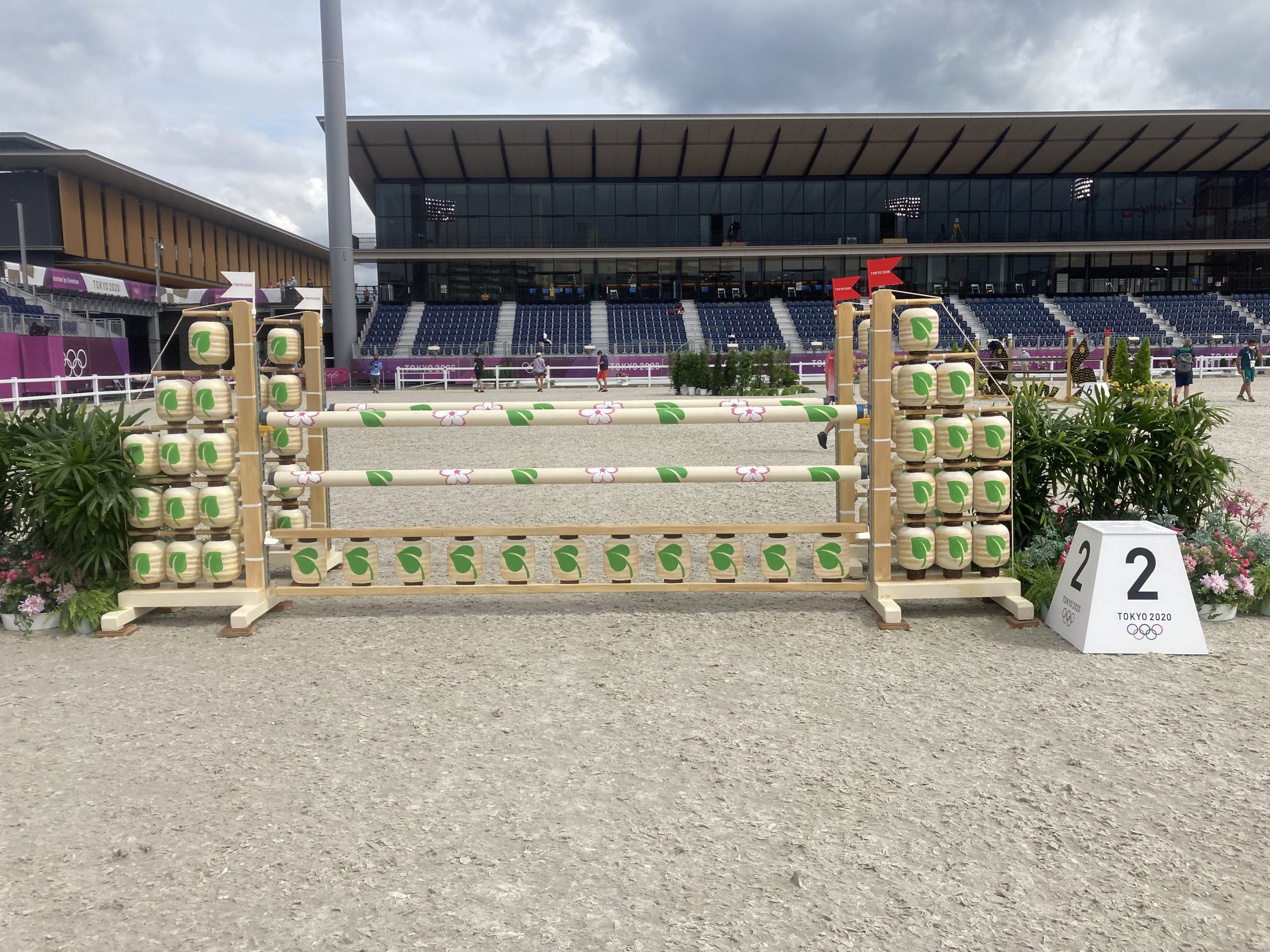
Fence three – FEI 100 years
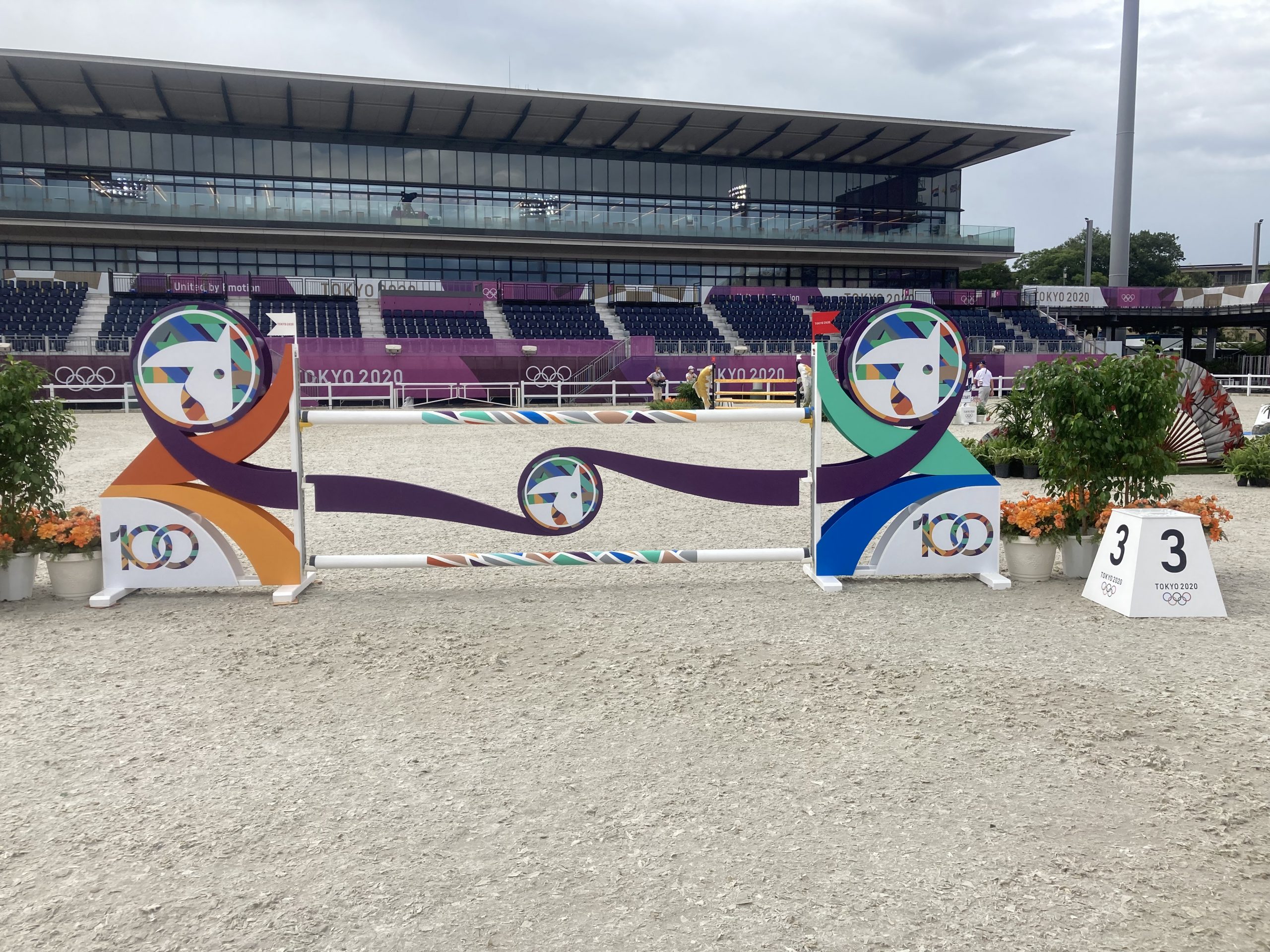
Fence four – Nihonbashi Bridge, Tokyo
Nihonbashi (literal translation: Japanese bridge), is the name of a business neighbourhood which belongs to the district of Chuō in Tokyo and is home to the famous bridge itself. It is considered as one of the most important level steps of the Tōkkaidō of the Edo period. It was the most important commercial point in the country as it was the starting point of five of the busiest routes of the time. The bridge has been destroyed by earthquakes and wars on several occasions. At present, the Nihonbashi Bridge is crossed by an elevated expressway. The bridge is said to have been built in 1603 under the order of Tokugawa Ieyasu. The next year, the starting point of Gokaido, or five major roads, was made and became the symbol of the prosperous city of Edo, the centre of Japan. The current twin arch bridge made of stone was completed in 1911. The kirin statue under the bridge light in the centre of the bridge depicts the prosperity of the city of Tokyo when it was made, and the shishi statues at the four corners depict protection. The Nihonbashi was designated as an Important Cultural Property of Japan

Fence five A – Red thread legend (there are six strides between fences four and five and there is one stride between five A and five B)
According to this myth, everyone is tied by the little finger with an invisible red thread that will lead them to another person with who they will make history. The two people connected by this thread will have an important history, no matter the place, the time or the circumstances. The red thread can be tangled, collapsed and stretched, as surely often happens, but it can never be broken. The ulnar artery connects the heart to the little finger. This thin vein that goes from the heart to the hand extends through the invisible world to finish its course in someone else’s heart. Unlike other legends, the Japanese is not limited to the couple, or to a single person we are destined to find. It speaks of a sort of arterial ramification that arises from a finger towards all those with whom we will make history and all those we help in one way or another. The red thread myth is a way to understand our relationships with other people as a default plot where all the little stories of which, in one way or another we are part of, and how they are not casual but part of a network of red threads that are there from the beginning. According to this legend, there is an old man who lives on the moon and leaves every night seeking among the spirits those akin to gather on earth, who have something to teach each other, and when he finds them he ties a red thread to find their way. So, our red threads end up in someone else.
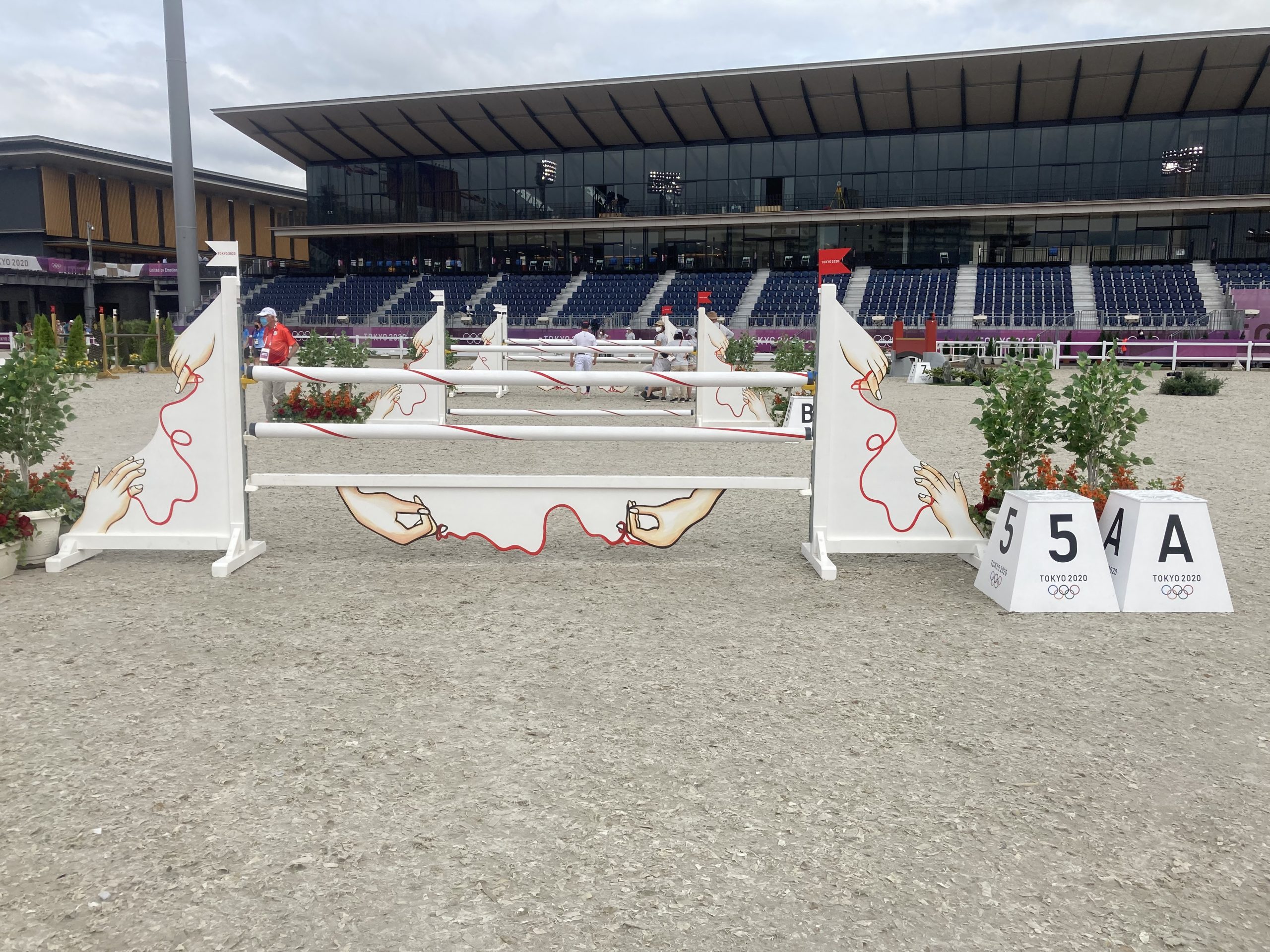
Fence five B – there is one stride between five B and five C

Fence five C

Fence six – Japanese Seigaiha Symbol
The Seigaiha or wave is a patter of layered concentric circles creating arches, symbolic of waves or water and representing surges of good luck. It can also signify power and resilience.
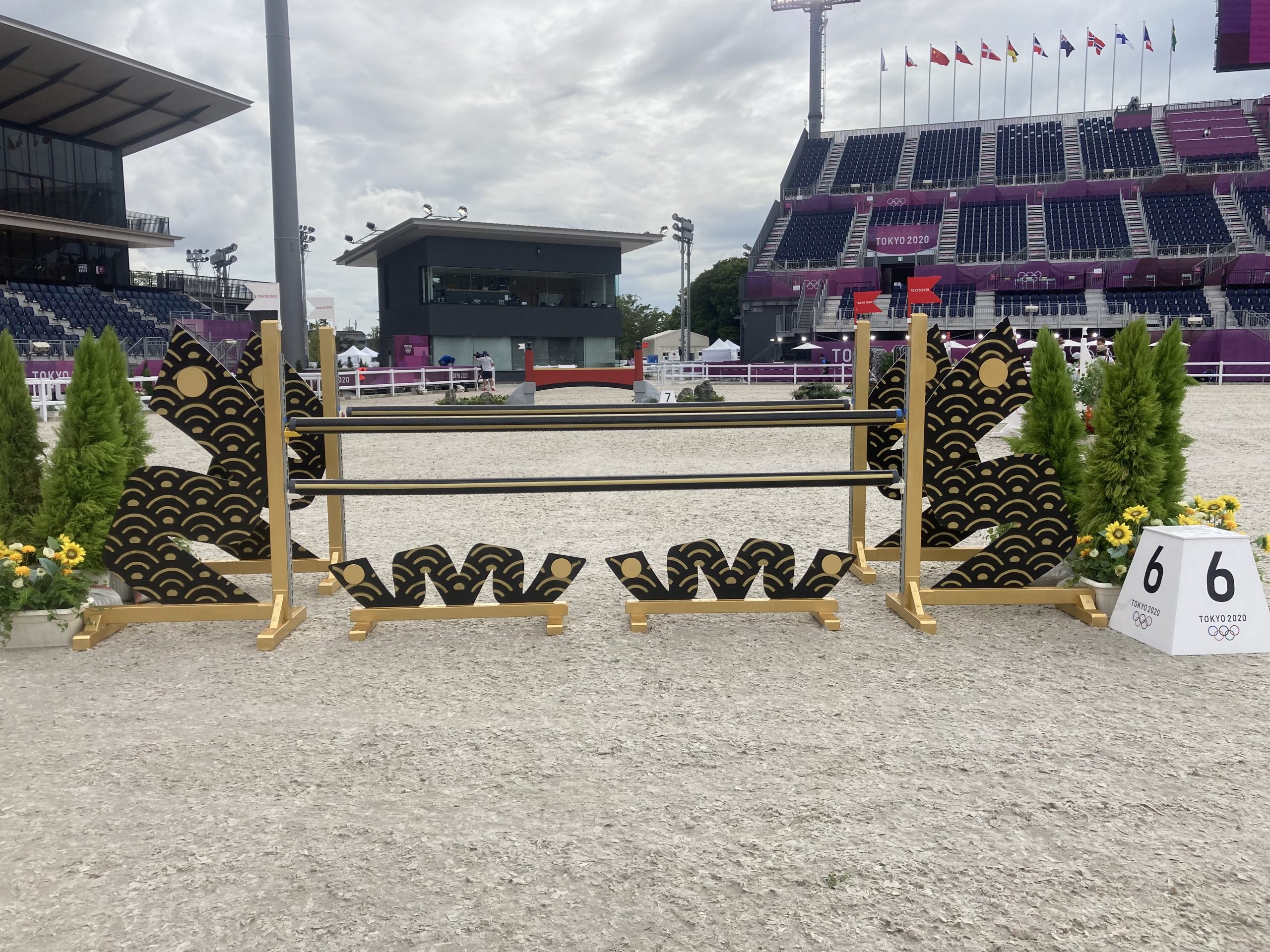
Fence seven – Shinkyo bridge, the Nikko mausoleum (there are five strides between fences six and seven)
Nikko Bridge Shinkyo (神橋, Shinkyō) is located at the entrance before reaching the temple and shrines area of Nikko. It belongs to the Futarasan Shrine (二荒山神社) is a beautiful and ancient shrine that can be found in Nikko. This bridge is listed as one of the three most beautiful bridges in Japan next to the Kintaikyo Bridge of Iwakuni and the Saruhashi of Yamanashi prefecture. The Shinkyo bridge that can be seen at present was built in the year 1636, but was not opened to the public until 1973.

Fence eight – Kokeshi dolls
The Kokeshi are the traditional Japanese dolls. Originally crafted in the Tokohu region, in north Japan, a region in the North of Japan, an area most commonly known for its spas and thermal waters. Those considered to be the most traditional are called Naruko, and they are crafted in Miyagi. Its origin dates back to the 17th Century, halfway down through the Edo period. They are handmade and crafted in wood from either the dark cherry or the lighter mizuki tree. The original kokeshi dolls were crafted following a simple design and had an elongated shape mixed with subtle colours. As years have passed, more designs have appeared, always keeping one main characteristic in common, the lack of arms and legs. The body is usually decorated with floral motifs or with the appearance of a kimono. They are considered to be both decorative and good luck amulets. As the wood with which they are carved, the Mizuki, has a high resistance to fire, they are often bought to protect the house from fires. There are two types of kokeshi, traditional and creative or “Sosaku”. The latter are relatively new and can have a high artistic value.
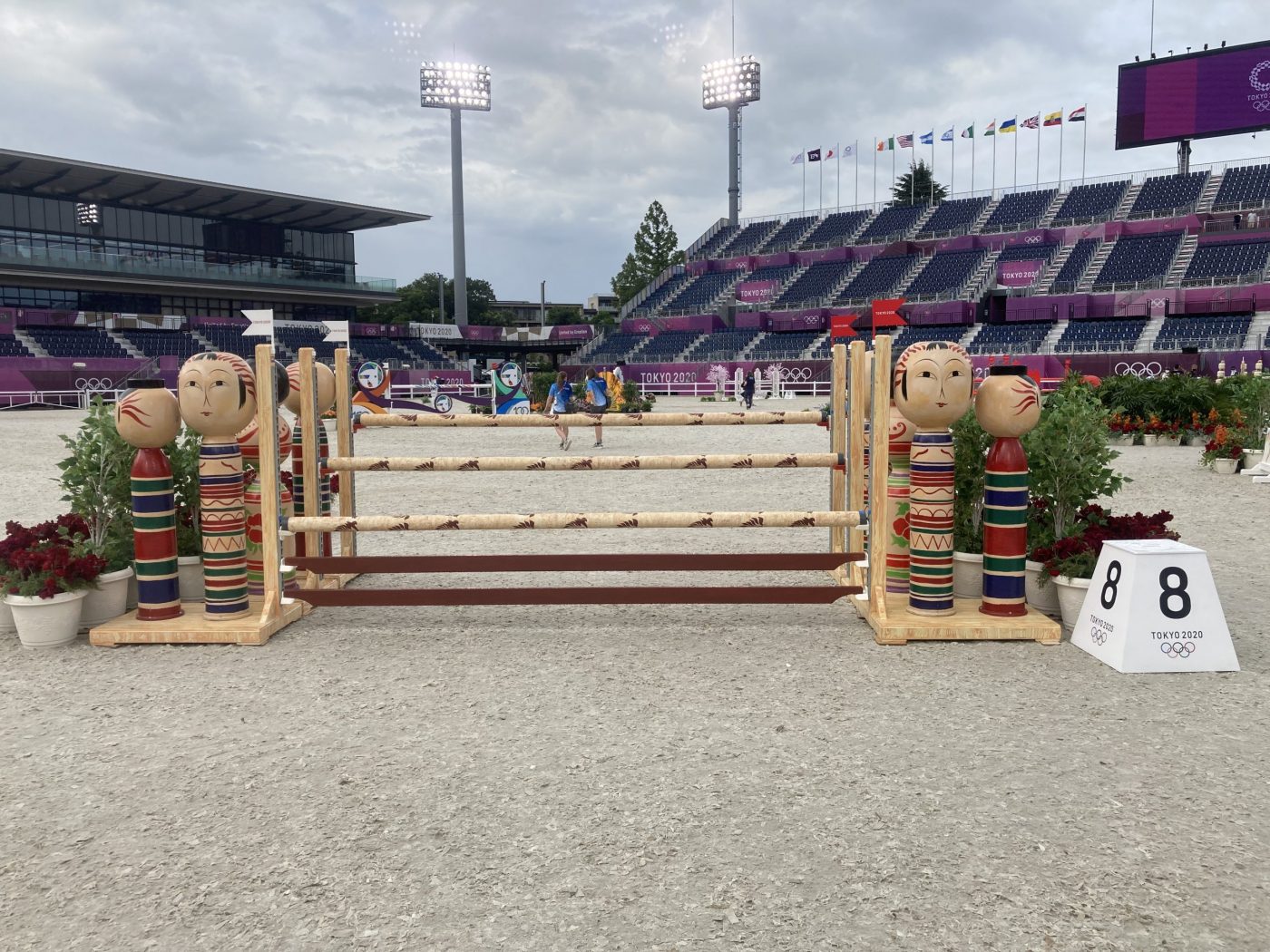
Fence nine A – Good luck charm, Daruma (there is one stride between fence nine A and nine B)
Every January, more than 400,000 people come to the Daruma Temple in Takasaki in search of a daruma – a Japanese amulet (達磨) – for the incoming year. The Daruma is considered a motivational amulet because it motivates us and gives us strength so that we can achieve what we set out to do. The daruma is a representation of our motivation, so that we do not feel weak during the process. Once a person has set our objective, they colour in one of the amulet’s eyes. Once they have reached their goal, they colour in the other eye to symbolise their thankfulness and satisfaction.

Fence nine B
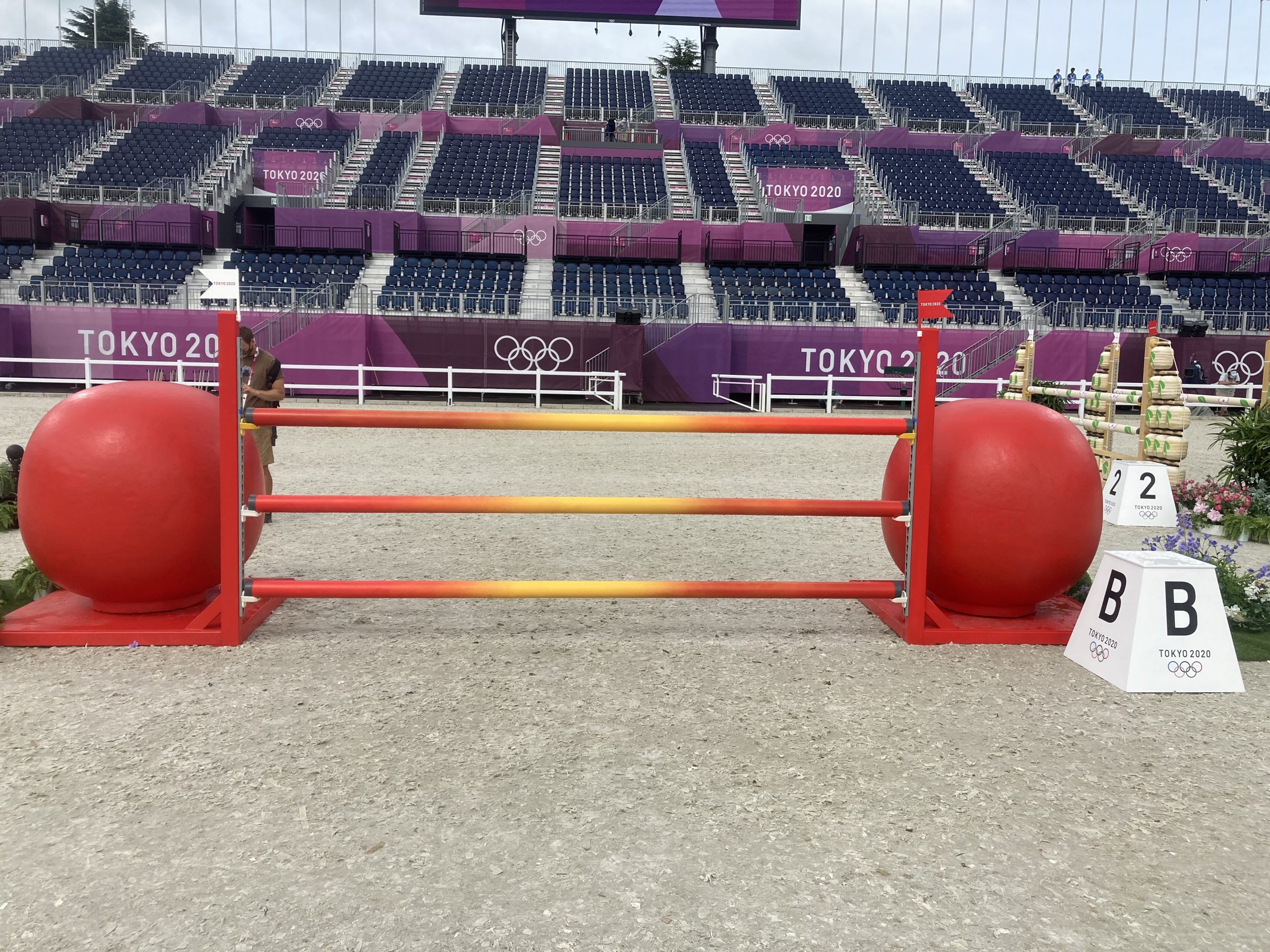
Fence 10 – Sakura
The cherry tree flower is seen as a metaphor of life, which is considered to be beautiful but transient. Cherry trees (Sakura Zensen) start blooming during March and the flowering front (Kaika Zensen) moves from Okinawa towards the north of the country, ending with the flowering of the cherry trees up in Hokkaidō in May. Japan’s Meteorology Office predicts the pattern the flowering front will follow, so that everybody is able to find the best places to see the trees bloom, which is crucial as they only flower for a week.

Fence 11 – Goldfish
The established theory in Japan is that goldfish (“kingyo” in Japanese) arrived from China around 1502. At that time, goldfish were said to have been kept as a rare and strange pet of aristocrats and the wealthy. Thereafter, kingyo-sukui (goldfish scooping) became popular during the Edo period (1603 – 1868), leading to the sale of goldfish in towns. Goldfish are a popular motif in Japanese art.
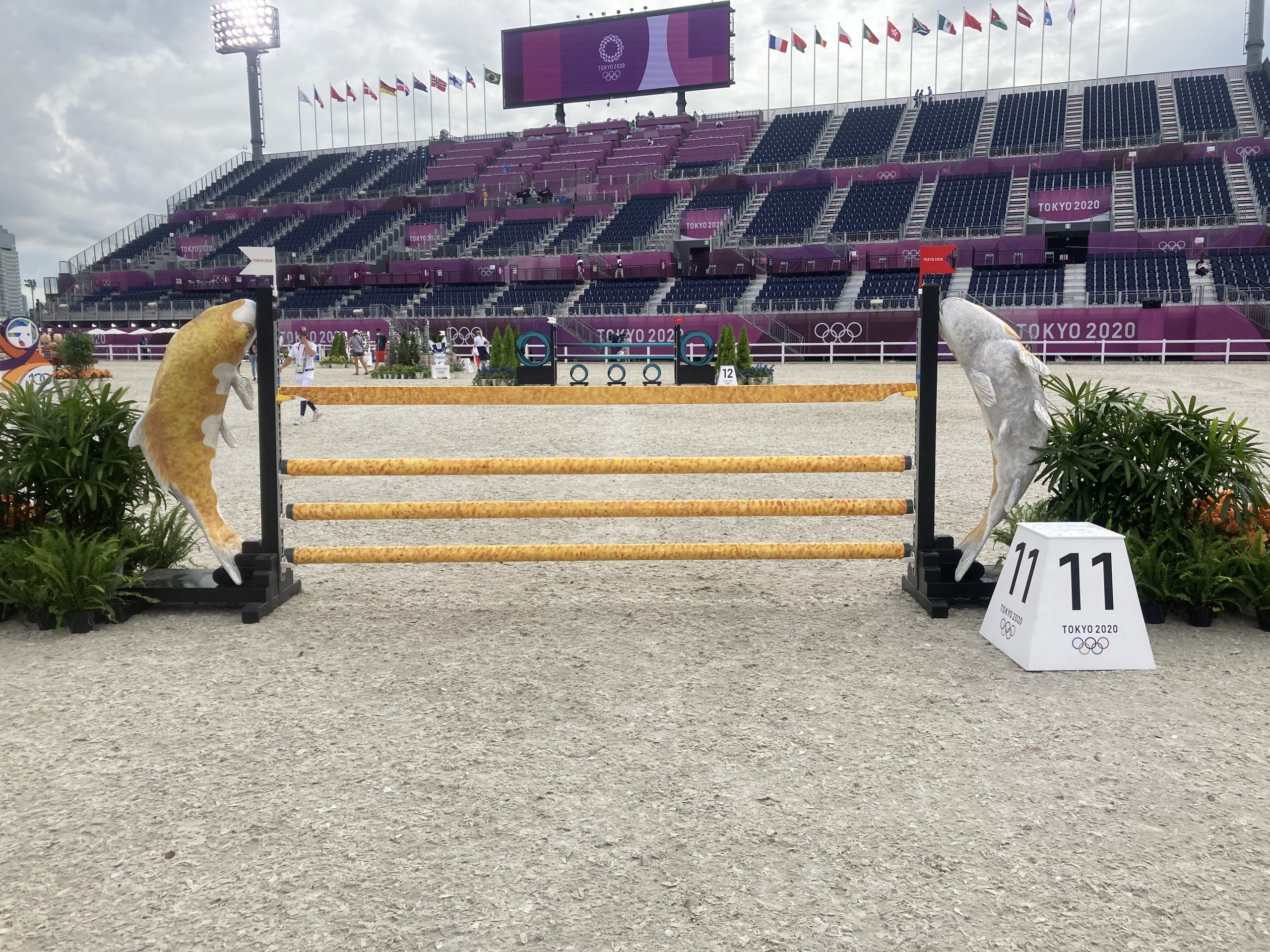
Fence 12 – Ensō (there are five strides between fences 11 and 12)
Ensō (circle) is one of the most common subjects of Japanese calligraphy. It has many names, including the circle of enlightenment, the enso circle, the infinity circle and even the lost symbol of Reiki. If you take the meanings of the two Kanji symbols that make up the word, ensō would translate as mutual circle or circle of togetherness. The ensō is a universal symbol of wholeness and completion. As there are so many definitions available, it is up to each individual person to form their own definition of what ensō means to them.
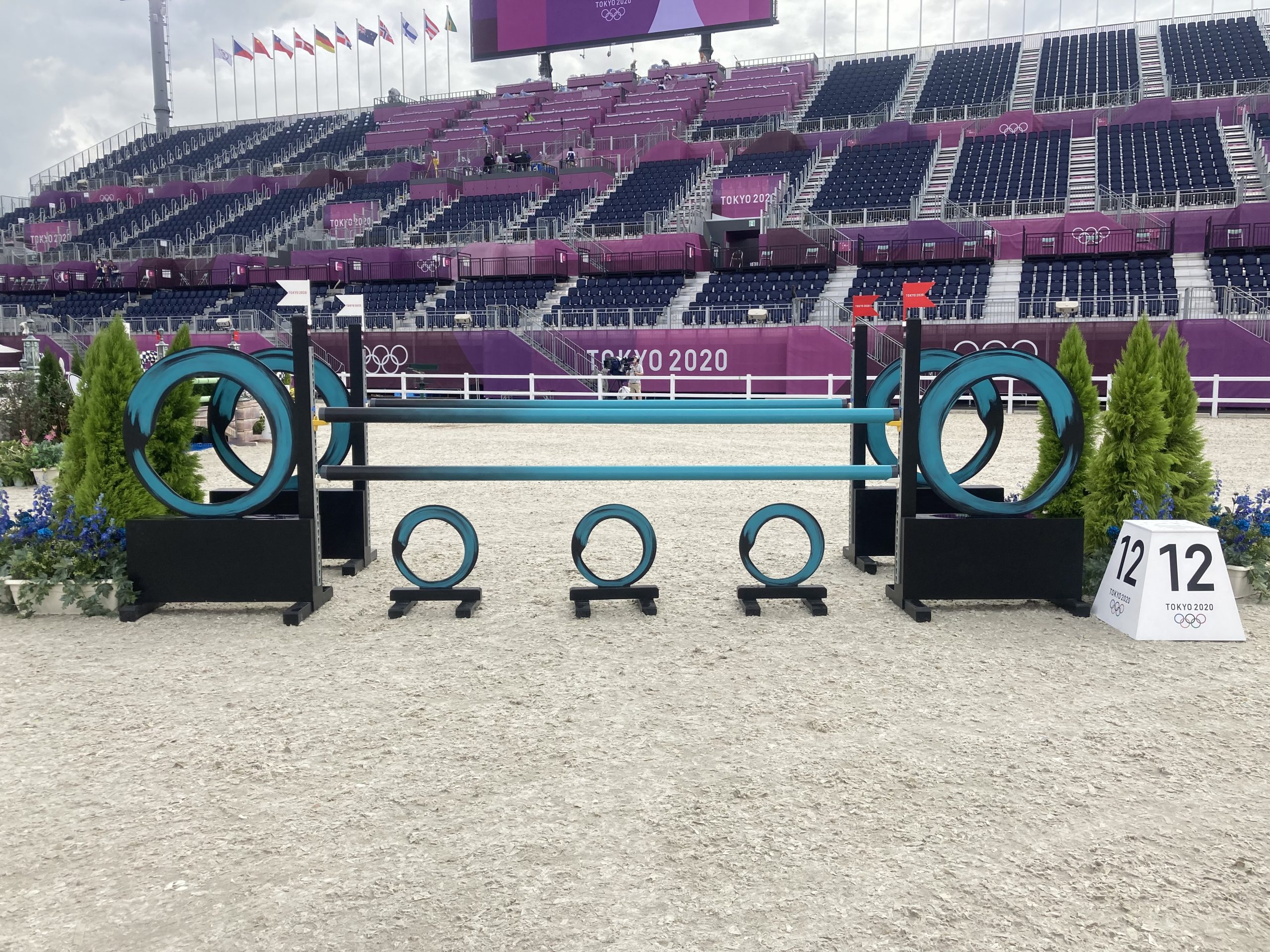
Olympic eventing showjumping: team competition course plan

Full running orders
- Find the full running order here [PDF download]
- Starting order by team [PDF download]
You might also be interested in:

Tales from Tokyo: ‘I feel a responsibility to say, “Screw that – you can do it any way you want to”’

*Updated* What time do Britain’s event riders jump for the Olympic medals today?

One horse eliminated at Olympic eventing final trot-up, plus two teams substitute horses

Tales from Tokyo: the amateur eventer who’s ridden for three nations – and speaks five languages

Subscribe to Horse & Hound magazine today – and enjoy unlimited website access all year round
Horse & Hound magazine, out every Thursday, is packed with all the latest news and reports, as well as interviews, specials, nostalgia, vet and training advice. Find how you can enjoy the magazine delivered to your door every week, plus options to upgrade your subscription to access our online service that brings you breaking news and reports as well as other benefits.

